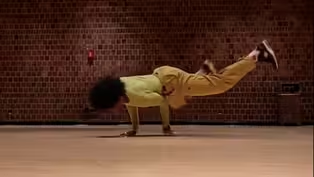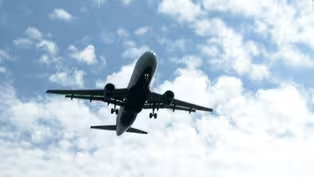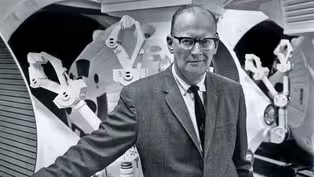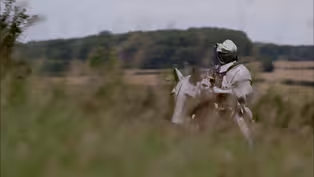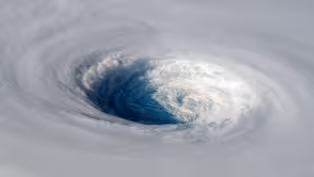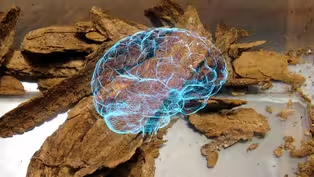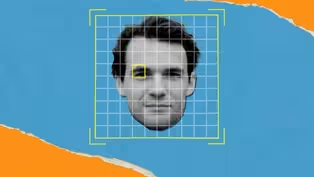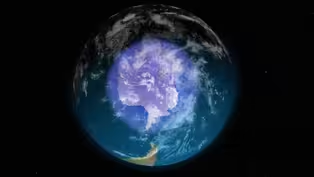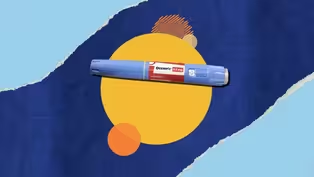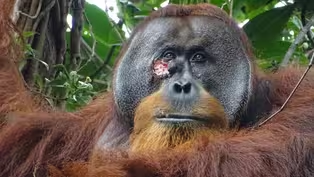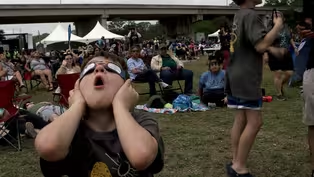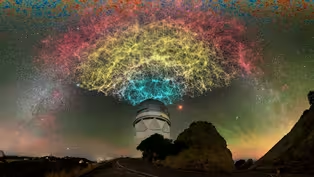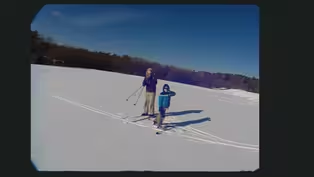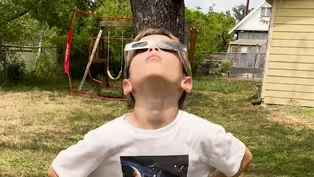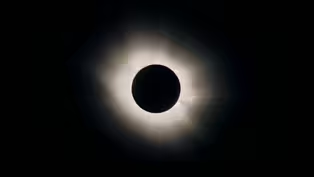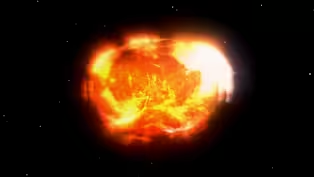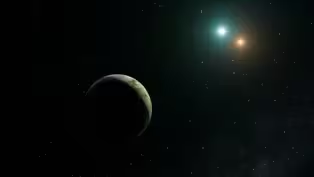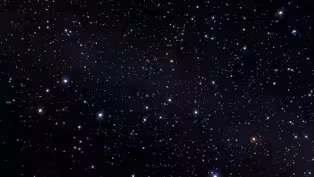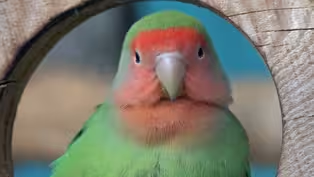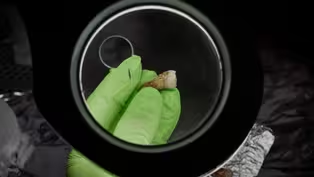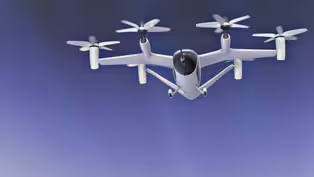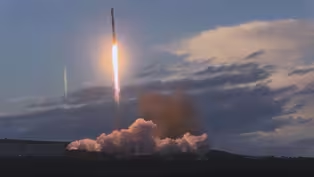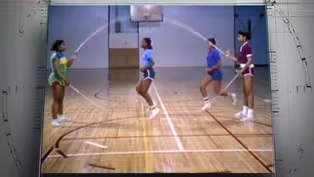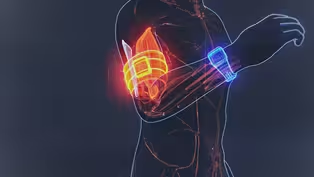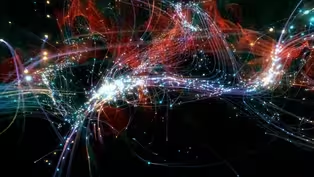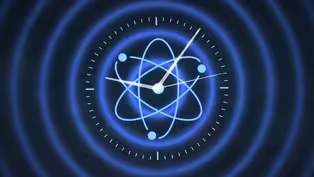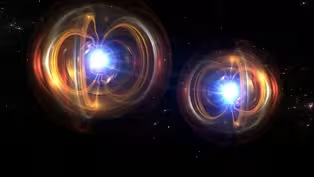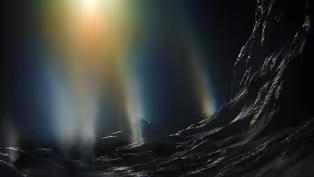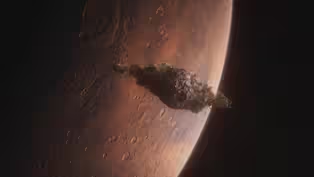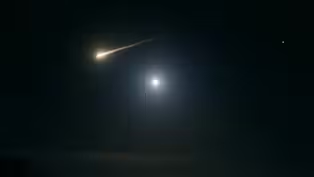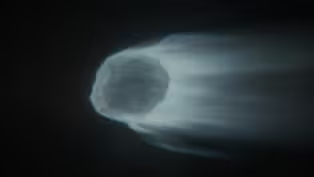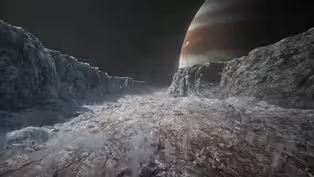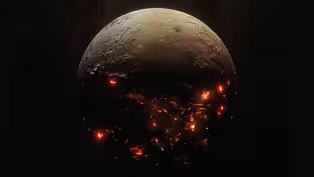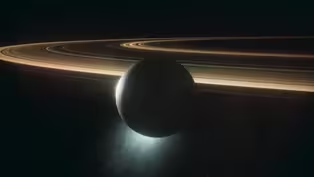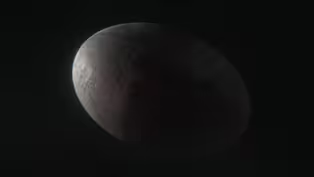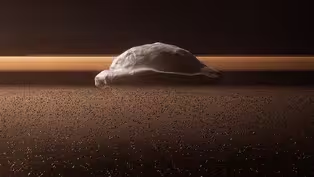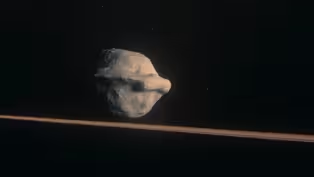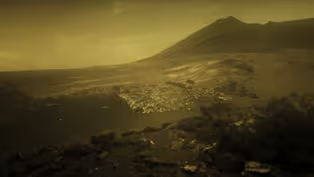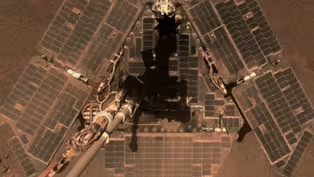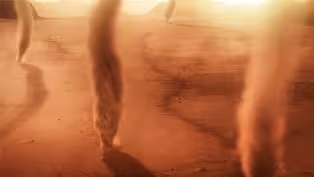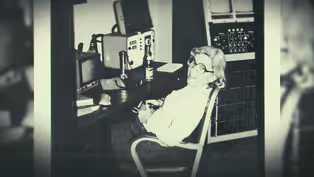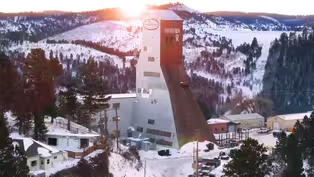
Can Technology Detect Deepfakes Better Than Humans Can?
Clip: Season 51 | 7m 9sVideo has Closed Captions
AI-generated photos are video are getting so good that it’s hard for humans to tell what’s real.
Researchers are trying to develop tools to thwart deep fakes in several different ways — from before they are even made, to detecting them once they are out on the internet.
Problems playing video? | Closed Captioning Feedback
Problems playing video? | Closed Captioning Feedback
National Corporate funding for NOVA is provided by Carlisle Companies and Viking Cruises. Major funding for NOVA is provided by the NOVA Science Trust, the Corporation for Public Broadcasting, and PBS viewers.

Can Technology Detect Deepfakes Better Than Humans Can?
Clip: Season 51 | 7m 9sVideo has Closed Captions
Researchers are trying to develop tools to thwart deep fakes in several different ways — from before they are even made, to detecting them once they are out on the internet.
Problems playing video? | Closed Captioning Feedback
How to Watch NOVA
NOVA is available to stream on pbs.org and the free PBS App, available on iPhone, Apple TV, Android TV, Android smartphones, Amazon Fire TV, Amazon Fire Tablet, Roku, Samsung Smart TV, and Vizio.
Buy Now

NOVA Labs
NOVA Labs is a free digital platform that engages teens and lifelong learners in games and interactives that foster authentic scientific exploration. Participants take part in real-world investigations by visualizing, analyzing, and playing with the same data that scientists use.Providing Support for PBS.org
Learn Moreabout PBS online sponsorship- [Sarah] Some AI-generated deepfakes are getting so good, it can be near impossible to tell what's real and what's not.
- What if I were to tell you that I'm not even a human being?
Would you believe me?
- [Sarah] Many deepfakes, like these face swaps, are obvious and silly.
- Okay, so.
- But others are more harmful, like the pornographic image of Taylor Swift that recently went viral.
Over 90% of deepfakes are non-consensual sexual images of women, and it's not just celebrities being targeted, but also regular teenage girls.
- Now we're already seeing deepfake images being created about girls in high school by their peers in high school, right?
There's no way for these girls to protect themselves, right?
Their images exist online.
We're in a social media world.
There are images of them that exist, period, and it takes very, very little to create a sophisticated deepfake.
- [Sarah] Creating convincing deepfakes can now be done quickly and easily by anyone and about anyone.
- People really can't tell.
They look at them and they think they can.
And I think we have to be really careful about trying to give people ideas that they can spot this.
- The tells of yesterday's deepfakes, like an extra finger on a hand, a strange blink or a glitch, aren't really there anymore because the tools just keep improving.
So can technology fare any better than humans at spotting and detecting deepfakes?
Can the same technology that created them be used to detect them?
- To an extent.
So the people who know the technology the best are the ones that are building it.
- [Sarah] Deepfakes are made using a type of artificial intelligence called deep learning.
These AI programs are trained using huge amounts of data, including photos or videos.
Then they use complex algorithms to make up a new photo or video.
We're gonna talk about three categories of tools being created to prevent or identify deepfakes.
One embeds markers to indicate if the content is real or fake, another spots deepfakes out in the wild, and the last tries to prevent them from being made in the first place.
First, let's talk about watermarks.
These are like an invisible stamp that's embedded in an AI-generated photo or video as it's being created.
- When you see companies like Google and Meta doing this, that they're applying an imperceptible watermark, an invisible watermark that comes in at the point of creation or may even be in the training data of the tool, I-E, it's sort of baked into the way the tool generates an image.
- The watermark would be undetectable to the human eye, but could be read by computers, which would flag it as AI-generated.
The challenge is that watermarks are currently optional to add or relatively easy to remove.
- People are also trying to do things that involve showing you how the media evolves over time, because the problem is a watermark is pretty binary.
It's yes, it's AI.
No, it's not.
And with some AI tools, you can change just a part of an image or a video, right?
- So an alternative to watermarks is something called metadata provenance.
The creators describe it as a nutrition label for a piece of media.
It embeds information about how it was created, how it was edited, and how it was distributed right into the media's metadata.
If the media was altered, say in Photoshop or using AI, and then uploaded online, those changes would also be recorded.
- The problem is, at the moment, those tools are not yet available across the whole ecosystem.
So, some tools put those signals in, and then there are plenty of other places when we're making media which deliberately strip out metadata, right?
And so, a metadata-based solution doesn't work yet across the system, so we have these imperfect, not yet fully implemented ways to essentially signal that something was made or edited with AI.
- So, another approach focuses on detecting deepfakes after they've been created.
For example, Intel is working on a tool that detects one thing that real live humans have, blood.
When our heart's pump, our blood changes color slightly from bright red to dark red as it's enriched and depleted of oxygen.
Intel's tool looks for signals of that blood flow in the pixels of a video, uses an algorithm to map it across the face, and then uses deep learning to identify if the person is real or AI-generated.
The blood flow tracking technology is similar to those used in devices like smart watches to track heart rate.
Intel reports a 96% accuracy rate for spotting fake videos, but the system has not been independently analyzed.
All of these detection tools hold both promise and pitfalls, which is why it's best to not just rely on one method for spotting fakes.
- Detection is probably, they talk about it as an ensemble approach is the best way.
And basically the way to think about that is to do good detection, you're gonna have a bunch of different techniques that think about different ways you detect AI-generated manipulations.
- But catching deepfakes isn't the only problem.
There's also preventing yourself from being the victim of one.
So let's move on to preventative tools, which stops deepfakes from being created in the first place.
One example are shields, which add an invisible protective layer to an image that makes it hard for AI models to recognize and manipulate them.
A team at the University of Chicago developed a tool called Nightshade for artists to protect their work from being scraped to train AI models without permission.
Nightshade adds an invisible poison to the pixels of an image that cause the AI model to misinterpret what that image is or to just behave in strange ways so when we see a picture of a hat, AI sees a picture of a cake.
But shields can only be added to new images that are uploaded on the internet, not ones that already exist online.
The challenge is that all of these tools are responding to the current weaknesses of the AI models, which keep getting better and better.
- Anybody who works in the field of adversarial AI or any sort of security knows it's a game of cat and mouse.
So we create ways to identify people, malicious actors.
Bad actors just get better.
- Across the board, technical fixes will only go so far.
Experts say that regulation across the entire system of how AI is developed, detected, and deployed is the only way to solve some of these problems.
- It's key we make sure that there's a legal responsibility to do this across that AI pipeline, and that it's done with our human and civil rights at the center of it, and that's really the responsibility of governments to do that.
- [Narrator] In the meantime, if the tools to detect deepfakes aren't reliable or standardized and the bad actors are always a step ahead, what should the average person do to sift through what's true and what's not?
- So I think it's unreasonable to expect the average person to be able to spot these images, audio and video.
It is reasonable to say pause before you share a video that is too good to be true.
See if there's an alternative source.
See if someone's written a story that explains this was made with AI that comes from a credible journalist or a credible community source you trust.
- [Narrator] Sam recommends using the SIFT method.
Stop, don't have a reaction.
I is investigate sources, F, find other coverage, and T is to trace claims.
- I think one thing is building that critical thinking, that muscle memory to say, "I saw this video," or, "I saw this thing.
"Let me go search it online and see if it's real."
(serious music)
The Physics of Breaking, a New Olympic Sport
Video has Closed Captions
Clip: S51 | 1m 19s | Here are three moves in breaking, the newest Olympic sport, that appear to defy the laws of physics. (1m 19s)
What Happens to Your Body During a Speed Eating Competition?
Video has Closed Captions
Clip: S51 | 5m 16s | Competitive eaters stretch their stomachs beyond limits. Here’s what happens inside their bodies. (5m 16s)
Flight Turbulence Is Actually Getting Worse
Video has Closed Captions
Clip: S51 | 1m 48s | It’s not all in your head - flights really are bumpier these days. (1m 48s)
Sir Arthur C. Clarke's Vision of the Computer-Dominated Future
Video has Closed Captions
Clip: S51 | 1m 39s | Watch this interview with Sir Arthur C. Clarke for The Mind Machine (1978.) (1m 39s)
How Medieval Armorers Made Knights Bulletproof
Video has Closed Captions
Clip: S51 | 2m 15s | Knights and firearms clashed on the battlefield for over 200 years. (2m 15s)
Video has Closed Captions
Clip: S51 | 1m 2s | Hurricanes are getting more intense, faster. (1m 2s)
This Powerful Psychedelic May Help Treat Opioid Addiction
Video has Closed Captions
Clip: S51 | 3m 28s | In recent decades, there's been renewed interest in studying ibogaine. (3m 28s)
Can Technology Detect Deepfakes Better Than Humans Can?
Video has Closed Captions
Clip: S51 | 7m 9s | AI-generated photos are video are getting so good that it’s hard for humans to tell what’s real. (7m 9s)
What Happened to the Hole in the Ozone Layer?
Video has Closed Captions
Clip: S51 | 3m 13s | In the 1980s scientists discovered a crucial part of the Earth’s atmosphere was extremely thin. (3m 13s)
A Hidden Cause of Sinkholes Is Lurking Underground
Video has Closed Captions
Clip: S51 | 2m 21s | About 40% of the U.S. is susceptible to sinkholes. (2m 21s)
Ozempic's Surprising Real Power
Video has Closed Captions
Clip: S51 | 3m 51s | Blockbuster drug Ozempic keeps surprising scientists. (3m 51s)
What Dating Apps Know About You
Video has Closed Captions
Clip: S51 | 2m 51s | You might be collecting matches, but dating apps are collecting your data. (2m 51s)
These cheeses are at risk of going extinct
Video has Closed Captions
Clip: S51 | 1m 11s | The culprit is a lack of microbial biodiversity in the mold used to make iconic French cheeses. (1m 11s)
First ape ever seen using medicinal plant to treat wound
Video has Closed Captions
Clip: S51 | 1m 58s | After this orangutan sustained a gnarly facial wound, he did something kind of human-like. (1m 58s)
Total Eclipse in the Heart of Texas Hill Country
Video has Closed Captions
Clip: S51 | 6m 41s | People from all over the country converge on a small Texas town to see a total solar eclipse. (6m 41s)
New map of the universe hints that dark energy may be evolving
Video has Closed Captions
Clip: S51 | 3m | Dark energy fundamentally shapes our universe and what astronomers know about it might be wrong. (3m)
Are winters getting less snowy?
Video has Closed Captions
Clip: S51 | 4m 49s | It’s not just your imagination, winters across the U.S. are changing. (4m 49s)
How America watched the solar eclipse
Video has Closed Captions
Clip: S51 | 2m 13s | Millions witnessed the Moon cover the Sun on April 8, some viewers sent us their videos. (2m 13s)
How to watch the eclipse without burning your eyes
Video has Closed Captions
Clip: S51 | 1m 59s | A total solar eclipse is coming. If you want to check it out, you need eye protection. (1m 59s)
Rare stellar explosion will ignite a "new star"
Video has Closed Captions
Clip: S51 | 1m 17s | Sometime between now and September a star will explode. (1m 17s)
The discovery of worlds beyond our solar system
Video has Closed Captions
Clip: S51 | 1m 39s | How did we discover exoplanets? (1m 39s)
The force that makes up more than half of the universe
Video has Closed Captions
Clip: S51 | 1m 40s | Dark Energy was first discovered in 1998, and scientists don’t fully understand it. (1m 40s)
How parrots swing like monkeys
Video has Closed Captions
Clip: S51 | 1m 36s | Like monkeys, parrots are also able to travel by suspending their body weight. (1m 36s)
Who is the Mystery Man Buried Under Notre Dame?
Video has Closed Captions
Clip: S51 Ep18 | 3m | Can scientists identify the man buried inside a mysterious coffin found under Notre Dame? (3m)
Lost Tombs of Notre Dame Preview
Video has Closed Captions
Preview: S51 Ep18 | 30s | Mysterious bodies are found under one of the world’s most famous cathedrals. (30s)
Building Stuff: Change It! Preview
Video has Closed Captions
Preview: S51 Ep17 | 30s | From electric flight to artificial noses, engineers are finding new ways to preserve our planet. (30s)
Building Stuff: Reach It! Preview
Video has Closed Captions
Preview: S51 Ep16 | 30s | Humans are born to roam. See how engineers are inventing new ways to explore and extend our range. (30s)
Creating a Robotic Double Dutch Machine
Video has Closed Captions
Clip: S51 Ep15 | 5m 8s | Blending innovation and culture, engineers bring a robotic Double Dutch machine to life. (5m 8s)
Building Stuff: Boost It! Preview
Video has Closed Captions
Preview: S51 Ep15 | 30s | Is engineering humanity’s superpower? See how we can amplify our natural abilities in amazing ways. (30s)
The Most Baffling Idea in Physics, Explained
Video has Closed Captions
Clip: S51 Ep14 | 3m 33s | Quantum entanglement defies our everyday understanding of reality. (3m 33s)
How Atomic Clocks Keep Perfect Time
Video has Closed Captions
Clip: S51 Ep14 | 2m 15s | Atomic clocks use quantum physics and the resonant frequency of atoms, like cesium, to define time. (2m 15s)
Decoding the Universe: Quantum Preview
Video has Closed Captions
Preview: S51 Ep14 | 30s | Dive into the universe at the tiniest – and weirdest – of scales. (30s)
Solar System: Wandering Worlds Preview
Video has Closed Captions
Preview: S51 Ep13 | 30s | Meet the surprising, oddball worlds moving around our solar system. (30s)
Could Mars Have a Ring Around It One Day?
Video has Closed Captions
Clip: S51 Ep13 | 2m 16s | The moon Phobos has a mysterious origin but a certain expiration date. (2m 16s)
Cameras Capture Earthbound Meteorite
Video has Closed Captions
Clip: S51 Ep13 | 1m 39s | Some large meteorites survive their descent through our atmosphere and land on Earth. (1m 39s)
Video has Closed Captions
Clip: S51 Ep12 | 55s | As comets cross the invisible boundary known as the ice line, their ice starts turning into gas. (55s)
This Moon May Have the Ingredients for Life
Video has Closed Captions
Clip: S51 Ep12 | 2m 14s | The ocean beneath Europa’s icy shell might be an ideal environment for life. (2m 14s)
Solar System: Icy Worlds Preview
Video has Closed Captions
Preview: S51 Ep12 | 30s | Visit strange, frozen worlds to discover the bizarre ice that forms beyond Earth. (30s)
This Tiny Moon Is a Volcanic Powerhouse
Video has Closed Captions
Clip: S51 Ep11 | 2m 45s | Io’s intense volcanic activity defies all expectations. (2m 45s)
Solar System: Volcano Worlds Preview
Video has Closed Captions
Preview: S51 Ep11 | 30s | Discover the powerful volcanic eruptions that have shaped worlds across our solar system. (30s)
Enceladus: A Frozen Moon With Explosive Eruptions
Video has Closed Captions
Clip: S51 Ep11 | 1m 56s | Enceladus’ small size and icy surface is no limitation to its extreme volcanism. (1m 56s)
Could This Icy Moon’s Ocean Support Life?
Video has Closed Captions
Clip: S51 Ep11 | 1m 21s | Hydrothermal vents in Enceladus’ ocean may hold the promise of life. (1m 21s)
Why is Haumea Shaped Like an Egg?
Video has Closed Captions
Clip: S51 Ep10 | 2m 30s | Most objects with a radius over 200 miles are spherical, but Haumea is an exception. (2m 30s)
Solar System: Strange Worlds Preview
Video has Closed Captions
Preview: S51 Ep10 | 30s | What are the weirdest worlds in our solar system, and how did they come to be? (30s)
How a Walnut-Shaped Moon Help Shape Saturn’s Rings
Video has Closed Captions
Clip: S51 Ep10 | 2m 35s | For millions of years, a tiny moon has made a significant impact on the structure of Saturn’s rings. (2m 35s)
Venus: The Planet With Battery Acid Clouds
Video has Closed Captions
Clip: S51 Ep9 | 3m 27s | This is what it would be like to walk on the surface of Venus. (3m 27s)
How the Martian Atmosphere Helped Nasa’s Rovers Restore Energy
Video has Closed Captions
Clip: S51 Ep9 | 2m 59s | Martian dust devils may have helped NASA’s rovers restore power during mission. (2m 59s)
Solar System: Storm Worlds Preview
Video has Closed Captions
Preview: S51 Ep9 | 30s | Discover the dramatic forces creating spectacular weather on neighboring planets and moons. (30s)
How Vera Rubin broke barriers in astronomy
Video has Closed Captions
Clip: S51 Ep8 | 4m 4s | Vera Rubin's work provided convincing evidence for a mysterious substance, dark matter. (4m 4s)
The Deepest Underground Lab in the U.S.
Video has Closed Captions
Clip: S51 Ep8 | 1m 44s | A team of researchers hunt for dark matter deep underground in the Black Hills of South Dakota. (1m 44s)
Providing Support for PBS.org
Learn Moreabout PBS online sponsorship
- Science and Nature

Capturing the splendor of the natural world, from the African plains to the Antarctic ice.













Support for PBS provided by:
National Corporate funding for NOVA is provided by Carlisle Companies and Viking Cruises. Major funding for NOVA is provided by the NOVA Science Trust, the Corporation for Public Broadcasting, and PBS viewers.


